How to to Acquiring an Indian Visa USA? Are you a US citizen planning to visit India? This comprehensive guide will provide you with all the information you need to know about acquiring an Indian visa. Whether you’re traveling for tourism, business, or any other purpose, understanding the visa application process is essential. Read on to learn about the requirements, types of visas available, and the step-by-step application process.
Applying for an Indian visa from the USA is now easier than ever. The Government of India has restored all valid regular paper and e-visas for nationals of the USA since March 16, 2022. This means that you can now plan your trip to India with confidence.
To begin the application process, you’ll need a valid passport with at least 6 months of validity and two blank pages. If you’re traveling with minors, additional documents such as a parental authorization form, copies of parents’ passports, and a marriage certificate (if applicable) will be required. It’s important to gather all the necessary documents before applying to ensure a smooth process.
The Indian visa application process can be completed online through the official Indian visa website or through VFS Global. E-visas are available for certain types of travel, while regular paper visas are still an option. Depending on your purpose of visit, you can choose from various types of visas, such as tourist visas, business visas, and more.
Once your visa application is submitted, it typically takes 4-5 days for processing. However, expedited options are available for an additional fee if you need your visa sooner. Upon approval, your visa can be downloaded and printed for presentation upon arrival in India.
It’s important to note that the duration of stay allowed in India depends on the type of visa and the discretion of Indian authorities. The maximum stay on a tourist visa is 180 days per calendar year. If you’re planning an extended stay or visiting for a specific purpose, it’s essential to familiarize yourself with the guidelines and regulations surrounding registration of foreigners in India.
Whether you’re a US citizen of Indian origin or traveling for diplomatic purposes, there are specific visa services available to cater to your needs. It’s advisable to contact the Indian Embassy or Consulate for detailed guidance on the visa application process.
If you’re planning your trip to India, it’s crucial to review the guidelines for international travel provided by the Ministry of Health and Family Welfare, Government of India. These guidelines ensure that you stay informed about COVID-19 related travel restrictions, quarantine requirements, and health protocols.
Remember, it’s crucial not to finalize your travel arrangements until your Indian visa is issued. Visa validity varies depending on the type of visa, so it’s essential to plan accordingly and avoid making non-refundable arrangements before your visa is in hand.
Stay tuned as we guide you through the step-by-step Indian visa application process and provide valuable tips for your interview preparation. We’ll also cover visa fees, checking the status of your visa application, and much more. So, if you’re ready to explore the enchanting land of India, let’s get started on your visa journey!
Indian Visa USA. Requirements for US Citizens
US citizens traveling to India are required to fulfill certain requirements to obtain an Indian visa. The primary requirement is a valid passport with at least 6 months of validity from the date of arrival in India. Additionally, the passport must have at least two blank pages for visa endorsement. These requirements ensure that the traveler has a valid and recognized travel document.
Furthermore, US citizens need to complete a visa application form, which can be obtained online from the official Indian visa website. The application form requires basic personal and travel information. Along with the application form, applicants must submit a recent passport-sized photograph that meets the specified guidelines. This photograph is an essential element of the visa application process.
Proof of travel arrangements is another necessary document for obtaining an Indian visa. US citizens must provide a copy of their confirmed round-trip flight tickets or travel itinerary. This serves as evidence of their intention to enter and exit India within the specified visa validity period. The proof of travel arrangements ensures that the traveler has a well-defined travel plan.
Indian Visa Documents for US Citizens:
1. Valid passport with at least 6 months of validity and two blank pages.
2. Completed visa application form obtained from the official Indian visa website.
3. Recent passport-sized photograph meeting specified guidelines.
4. Proof of travel arrangements (confirmed round-trip flight tickets or travel itinerary).
These requirements and documents are crucial for US citizens planning to travel to India. Fulfilling these criteria and submitting the necessary documents will ensure a smooth visa application process and pave the way for an incredible journey to India.
| Document | Requirement |
|---|---|
| Valid passport | At least 6 months of validity and two blank pages |
| Visa application form | Obtained from the official Indian visa website |
| Passport-sized photograph | Recent and meeting specified guidelines |
| Proof of travel arrangements | Confirmed round-trip flight tickets or travel itinerary |
Types of Indian Visa USA
US citizens traveling to India can choose from various types of visas depending on their purpose of visit. The most common types are the tourist visa and the business visa.
The tourist visa is intended for individuals visiting India for recreational or sightseeing purposes. It allows for a maximum stay of 180 days per calendar year. This visa is suitable for tourists exploring India’s rich cultural heritage, historical landmarks, and natural beauty.
On the other hand, the business visa is designed for individuals traveling to India for business-related activities such as attending conferences, meetings, or exploring business opportunities. It is important to note that this visa does not permit individuals to engage in employment or undertake any commercial activities.
In addition to tourist and business visas, there are other types of visas available for US citizens traveling to India. These include visas for medical treatment, conferences, and employment. Each type of visa has specific requirements and validity periods. It is crucial for travelers to carefully assess their purpose of visit and choose the appropriate visa category to ensure a smooth and hassle-free travel experience to India.
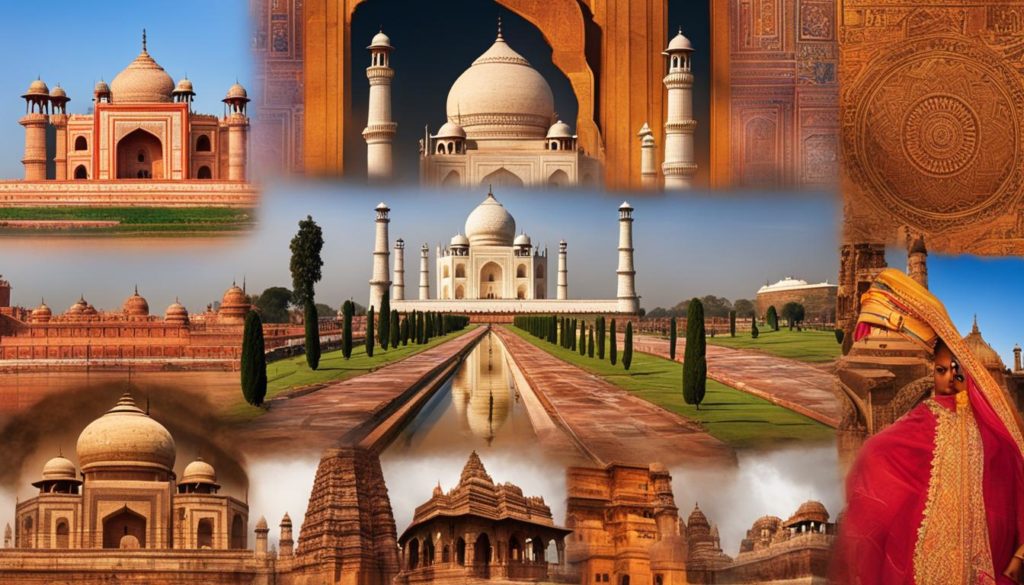
| Visa Type | Purpose of Visit | Maximum Stay |
|---|---|---|
| Tourist Visa | Recreational or sightseeing purposes | 180 days per calendar year |
| Business Visa | Business-related activities (non-employment) | Depends on the duration of the business engagement |
| Medical Visa | Medical treatment in India | Depends on the duration of the treatment |
| Conference Visa | Attending conferences/seminars in India | Depends on the duration of the conference |
| Employment Visa | Employment in India | Depends on the employment contract |
Other Visa Categories
- Student Visa: For individuals pursuing education in India.
- Research Visa: For individuals conducting research in India.
- Journalist Visa: For media professionals covering events in India.
- Project Visa: For individuals working on specific projects in India.
It is important for US citizens to carefully review the requirements and restrictions of each visa category before applying to ensure a successful visa application and a seamless travel experience to India.
Indian Visa Application Process for US Citizens
If you are a US citizen planning to travel to India, it is important to understand the Indian visa application process. This section provides a step-by-step guide on how to apply for an Indian visa and the necessary requirements. Whether you are applying for a tourist visa, business visa, or any other type of visa, the process remains the same.
Gather Required Documents
Before starting your application, make sure you have all the necessary documents. These include a valid passport with at least 6 months of validity and two blank pages, a completed visa application form, a recent passport-sized photograph, and proof of travel arrangements. Additional documents may be required depending on the type of visa you are applying for.
Apply Online
The Indian visa application process for US citizens can be done online through the official Indian visa website or through VFS Global. Fill out the online application form with accurate and complete information. Upload the required documents, including your photograph. Make sure to review all the information carefully before submitting your application.
Pay the Visa Fee
Once your application is submitted, you will need to pay the visa fee. The fee can be paid online using a debit or credit card. The visa fee varies depending on the type and duration of the visa you are applying for. Make sure to keep a copy of the payment receipt for your records.
After completing these steps, your visa application will be processed by the Indian authorities. The processing time is typically 4-5 days, although expedited options are available for an additional fee. Once your visa is approved, you can download and print it for presentation upon arrival in India.
Entry Points and Duration of Stay in India
When traveling to India from the United States, it is essential to be aware of the entry points and the duration of stay allowed on your Indian visa. US citizens holding a valid Indian visa can enter India through designated ports of entry, which include international airports, seaports, and land border checkpoints. These entry points ensure easy access for travelers and provide efficient immigration procedures.
The duration of stay allowed in India depends on the type of visa you hold and the discretion of the Indian authorities. As a tourist visa holder, you are typically allowed a maximum stay of 180 days per calendar year. However, it is important to note that the duration of stay can vary based on the specific visa regulations.
To understand the duration of stay allowed on your visa, it is crucial to review the details provided by the Indian authorities or consult with the Indian embassy or consulate. By ensuring compliance with the visa regulations, you can enjoy a hassle-free and pleasant stay in India.
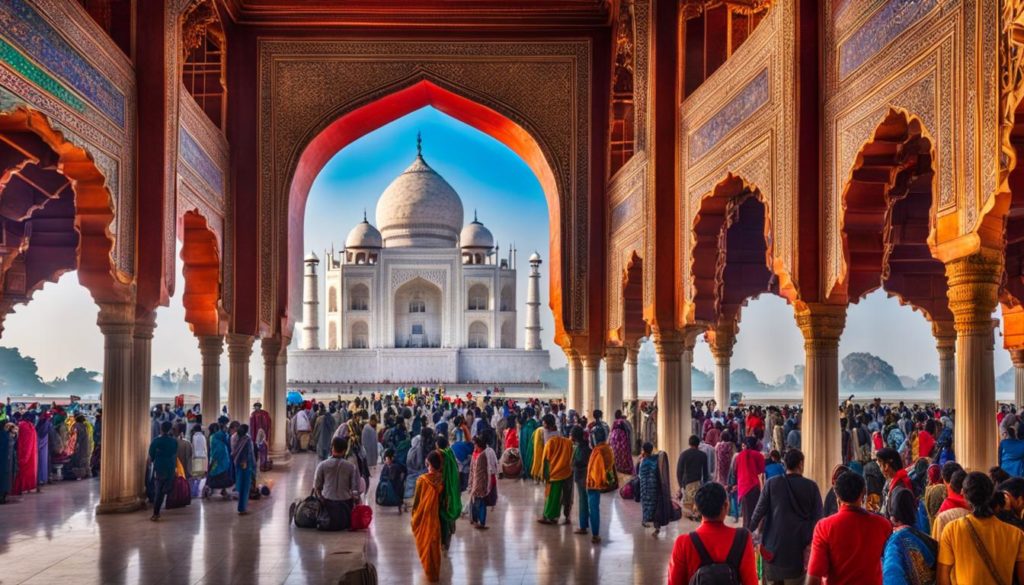
Entry Points
When planning your trip to India, it’s helpful to know the various entry points available for US citizens. Here are some of the major entry points:
| Airports | Seaports | Land Border Checkpoints |
|---|---|---|
| Indira Gandhi International Airport, Delhi | Mumbai Port | Wagah Border Checkpoint, Punjab |
| Chhatrapati Shivaji Maharaj International Airport, Mumbai | Chennai Port | Moreh-Tamu Border Checkpoint, Manipur |
| Kempegowda International Airport, Bangalore | Kolkata Port | Agartala-Akhaura Integrated Checkpost, Tripura |
Duration of Stay
The duration of stay allowed in India varies depending on the type of visa. For tourism purposes, the maximum stay allowed on a tourist visa is 180 days per calendar year. However, it’s important to note that the immigration officer has the discretion to grant a shorter duration of stay based on various factors.
It is advisable to plan your travel itinerary accordingly and ensure that your intended stay in India falls within the duration allowed on your visa. Overstaying the authorized period can lead to fines, deportation, or difficulties in obtaining future visas.
By familiarizing yourself with the entry points and duration of stay regulations, you can make informed travel arrangements and have a smooth experience during your visit to India.
Registration of Foreigners in India
Foreigners visiting India on long-term visas, such as student visas or employment visas, are required to register with the Foreigners Regional Registration Officer (FRRO) or Foreigners Registration Officer (FRO) within 14 days of arrival. Business visa holders are also required to register if their stay in India exceeds 180 days in a calendar year. This registration process ensures compliance with immigration regulations and helps monitor the stay of foreigners in India.
A registration form needs to be filled out, and supporting documents such as a valid visa, passport, and residential address proof need to be submitted to the FRRO or FRO. The process may also require biometric data collection, such as fingerprints and photographs. It is important to note that failure to register within the specified timeframe may result in penalties or legal consequences.
The FRRO or FRO offices are located in major cities across India, and applicants can schedule an appointment online or visit the nearest office in person. The registration process can take several days, and it is advisable to start the process as soon as possible to avoid any delays or complications.
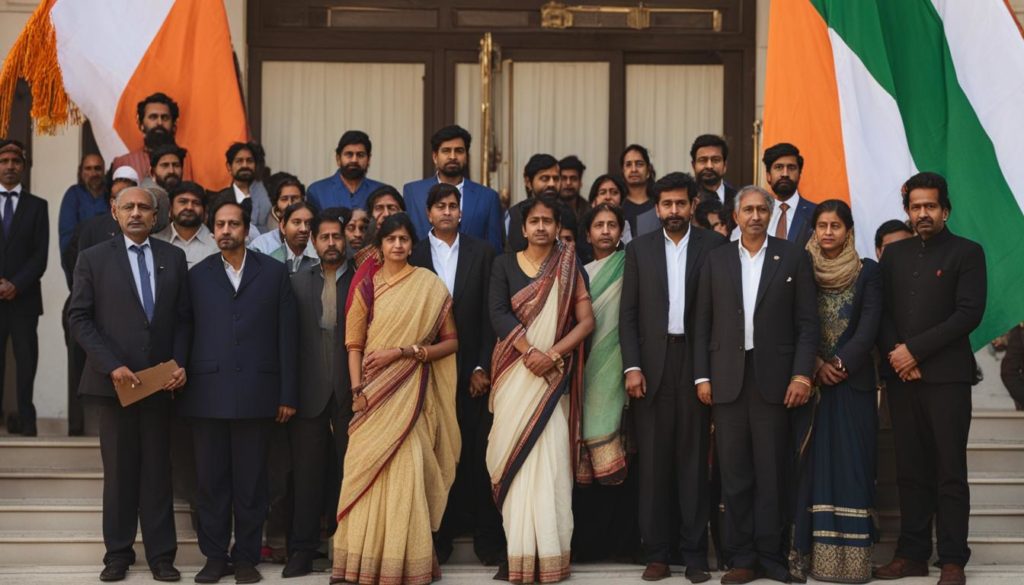
Registration Process
The registration process for foreigners in India typically involves the following steps:
- Complete the registration form: Fill out the registration form accurately and provide all necessary information.
- Gather required documents: Collect all required documents, such as a valid visa, passport, and residential address proof.
- Schedule an appointment: Visit the official FRRO or FRO website to schedule an appointment for document submission and biometric data collection.
- Submit documents and biometrics: Visit the designated FRRO or FRO office on the scheduled date and time to submit the required documents and provide biometric data.
- Pay registration fees: Pay the applicable registration fees as per the guidelines provided by the FRRO or FRO office.
- Collect registration certificate: Once the registration process is complete, collect the registration certificate from the FRRO or FRO office.
Benefits of Registration
Registering with the FRRO or FRO offers several benefits to foreigners staying in India:
- Compliance with immigration laws: Registration ensures compliance with Indian immigration regulations and avoids legal complications.
- Extended stay: Registration allows for a longer stay in India beyond the initial visa validity period.
- Ease of travel: Registered foreigners can travel within India without the need for additional permissions or approvals.
- Access to facilities: Registered foreigners can avail various facilities provided by the government, such as opening a bank account or obtaining a SIM card.
| Document Required for Registration | Additional Information |
|---|---|
| Valid visa | The visa should be valid for a duration longer than the intended stay in India. |
| Passport | The passport should have at least 6 months of validity remaining. |
| Residential address proof | Proof of residence in India, such as a rental agreement or utility bill, is required. |
| Passport-sized photographs | Recent passport-sized photographs are needed for biometric data collection. |
Emergency Visa Service for US Citizens
US passport holders of Indian origin and their immediate family members can avail of the emergency visa service through VFS Global in case of a family emergency, such as critical illness or death. This service is designed to expedite the visa process for urgent situations, ensuring that individuals can travel to India as quickly as possible.
Applicants will need to provide documentary evidence of the emergency, such as medical certificates or death certificates, to support their request for an emergency visa. It is important to note that an emergency service fee may be charged for this expedited processing. The exact fee can be obtained from the VFS Global website or by contacting their customer service.
The application process for an emergency visa can be completed directly through VFS Global, either online or at one of their visa application centers. The required documents and application forms will need to be submitted, and applicants may be required to attend an in-person appointment for biometric data collection.
It is advisable to contact VFS Global for the most up-to-date information on the emergency visa service, including application requirements, processing times, and any additional documents that may be required. Their dedicated customer service team is available to assist applicants throughout the application process, ensuring a smooth and efficient experience.
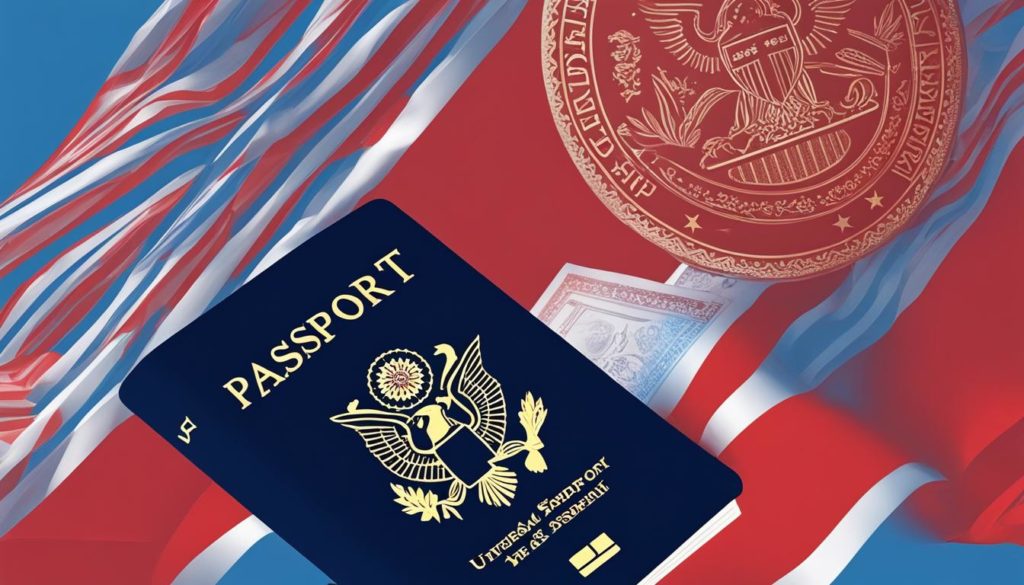
Emergency Visa Service for US Citizens – Application Process
The application process for an emergency visa through VFS Global involves the following steps:
- Prepare the required documents, including documentary evidence of the emergency and passport copies.
- Fill out the online application form on the VFS Global website, providing accurate and complete information.
- Pay the emergency service fee as specified by VFS Global.
- Schedule an appointment at the nearest visa application center, if required.
- Submit the application and supporting documents at the designated center.
- Provide biometric data, including fingerprints and photographs, if required.
- Track the status of the application online using the reference number provided by VFS Global.
- Collect the passport with the emergency visa from the visa application center or opt for courier delivery.
It is important to note that the emergency visa service is subject to the approval and discretion of the Indian authorities. While every effort is made to process these applications as quickly as possible, the final decision rests with the consular officer. Applicants are advised to provide all necessary supporting documents and evidence to substantiate their emergency.
Emergency Visa Service for US Citizens – Contact Information
For more information on the emergency visa service for US citizens, applicants can contact VFS Global through the following channels:
Website: https://www.vfsglobal.com/india-usa/emergency-visa.html
Email: info.inus@vfshelpline.com
Phone: +1 800-320-9696
| Service | Contact Information |
|---|---|
| Customer Service | +1 800-320-9696 |
| Visa Application Support | info.inus@vfshelpline.com |
| Website | https://www.vfsglobal.com/india-usa/emergency-visa.html |
Visa Services for Diplomatic and Official Passport Holders
Diplomatic and official passport holders, as well as Fullbright scholars, have specific requirements and procedures to follow when applying for an Indian visa. These individuals can contact the Indian Embassy or Consulate for guidance on the application process. The embassy will provide the necessary information and guidance to ensure a smooth visa application experience.
When contacting the embassy or consulate, it is important to provide all the required documents and follow their instructions closely. This will help avoid delays or complications during the application process. Diplomatic and official passport holders may have additional requirements, such as diplomatic notes or letters of recommendation, which will be outlined by the embassy or consulate.
For Fullbright scholars, it is recommended to reach out to the Indian embassy or consulate well in advance of the planned visit to understand the specific visa requirements and application process. They may need to provide proof of their Fullbright scholarship, a letter of invitation from the host institution in India, and other supporting documents.
Table: Visa Services for Diplomatic and Official Passport Holders
| Type of Passport | Visa Application Process | Additional Requirements |
|---|---|---|
| Diplomatic Passport | Contact the Indian Embassy or Consulate for guidance on the visa application process. | May require diplomatic notes or letters of recommendation. |
| Official Passport | Contact the Indian Embassy or Consulate for guidance on the visa application process. | May require official letters from the employer or organization. |
| Fullbright Scholars | Contact the Indian Embassy or Consulate well in advance to understand the visa requirements and application process. | May require proof of Fullbright scholarship, letter of invitation from the host institution in India, and other supporting documents. |
By following the instructions provided by the embassy or consulate, diplomatic and official passport holders, as well as Fullbright scholars, can ensure a smooth and successful visa application process. It is important to prepare all the required documents and provide accurate information to avoid any delays or complications.
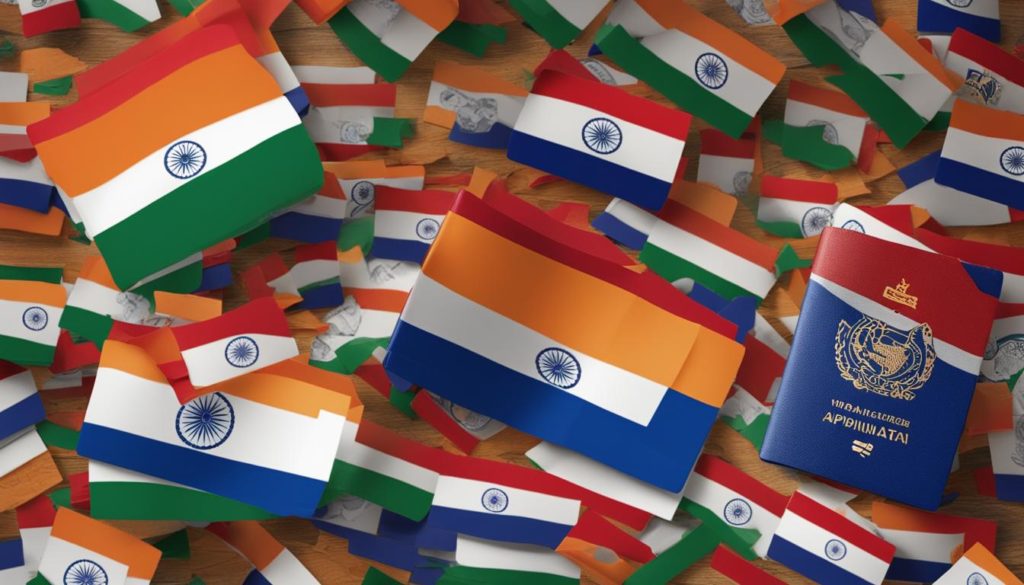
To provide further clarity on the visa issuance process, the following table outlines the key steps involved:
| Step | Description |
|---|---|
| 1 | Complete the online visa application form, providing accurate and up-to-date information. |
| 2 | Upload the required documents, including a valid passport, photograph, and proof of travel arrangements. |
| 3 | Pay the visa fee online using the authorized payment methods. |
| 4 | Wait for the application to be processed by the Indian authorities, which typically takes 4-5 days. |
| 5 | Check the status of the visa application using the provided application ID and passport number. |
| 6 | Download and print the approved visa document for presentation upon arrival in India. |
By following these steps and staying informed about the visa issuance process, US citizens can ensure a smooth and hassle-free experience when traveling to India.
Get mor euseful information about USTravelDocs support India
Visa Validity for US Citizens
When applying for an Indian visa as a US citizen, it is essential to understand the validity period of the visa. The duration of a visa varies depending on the type of visa obtained. For tourist e-visas, there are three options available: 30 days, 1 year, or 5 years. It is important to note that e-visas are non-extendable and non-convertible, meaning that you cannot extend the duration or change the visa type once it has been issued. Therefore, it is crucial to carefully consider the length of stay required before applying for an Indian visa.
For other types of visas, such as business, medical, or employment visas, the validity period can vary. It is recommended to check the specific requirements and validity periods for each type of visa on the official Indian visa website or consult with the visa processing agency.
It is worth noting that the Indian government does not issue visas on arrival, so it is essential to complete the visa application process before traveling to India. Failure to obtain a valid visa before arrival may result in denied entry into the country.
Visa Validity Table:
| Visa Type | Validity Period |
|---|---|
| Tourist e-Visa |
|
| Business Visa | Varies |
| Medical Visa | Varies |
| Employment Visa | Varies |
It is crucial to plan your travel and visa application accordingly to ensure that your visa remains valid for the duration of your stay in India. Remember to review all the requirements, gather the necessary documents, and allow ample time for the visa application process to avoid any last-minute complications. By completing the visa application accurately and adhering to the validity period, you can ensure a smooth and hassle-free visit to India.
India Visa Application Process – Step by Step
Applying for an Indian visa involves a straightforward process that can be completed online. Here is a step-by-step guide to help US citizens navigate the Indian visa application process:
- Visit the official Indian visa website or VFS Global’s website to access the online application form.
- Fill out the application form with accurate and up-to-date information. Make sure to double-check all the details before submitting.
- Upload the required documents, such as a scanned copy of your passport, recent passport-sized photograph, and proof of travel arrangements.
- Pay the visa fee using the available online payment options. The fee varies depending on the type and duration of the visa.
- Submit your application and wait for the processing time, which typically takes 4-5 days. Expedited options are available for an additional fee if you require a faster processing time.
- Once your visa is approved, you will receive an electronic visa. Download and print the visa, as you will need to present it upon arrival in India.
It is important to note that the visa application process may vary slightly depending on the visa processing agency or the specific circumstances of your application. It is recommended to carefully review the instructions provided on the official website or consult with the visa processing agency to ensure a smooth and successful application process.
Applying for an Indian visa involves a straightforward process that can be completed online. Here is a step-by-step guide to help US citizens navigate the Indian visa application process:
Step 1: Visit the Official Indian Visa Website or VFS Global’s Website
To start the application process, visit the official Indian visa website or VFS Global’s website. These platforms provide access to the online application form and detailed information on the application requirements.
Step 2: Fill Out the Application Form
Once you have accessed the online application form, fill it out with accurate and up-to-date information. The form will require personal details, travel plans, and information about your passport. Take your time to ensure all the information is correct before submitting the form.
Step 3: Upload Required Documents
As part of the application process, you will need to upload certain documents. These typically include a scanned copy of your passport, a recent passport-sized photograph, and proof of travel arrangements, such as flight tickets or hotel reservations. Make sure to follow the guidelines provided for document specifications and file formats.
Step 4: Pay the Visa Fee
Once you have completed the application form and uploaded the necessary documents, you will be prompted to pay the visa fee. The fee amount will vary depending on the type and duration of the visa you are applying for. Different payment options, such as credit card or online banking, may be available.
Step 5: Submit Your Application and Wait for Processing
After submitting your application and paying the visa fee, you will need to wait for the processing time. On average, the processing time is 4-5 days. However, expedited processing options are available for an additional fee if you require a faster turnaround time.
Step 6: Download and Print Your Visa
Once your visa is approved, you will receive an electronic visa. Download and print the visa, as you will need to present it upon arrival in India. Make sure to keep a digital copy as well, in case of any unforeseen circumstances.
Following these steps will help US citizens successfully navigate the Indian visa application process. It is important to plan ahead and apply for the visa well in advance of your intended travel dates to ensure a smooth and hassle-free experience.
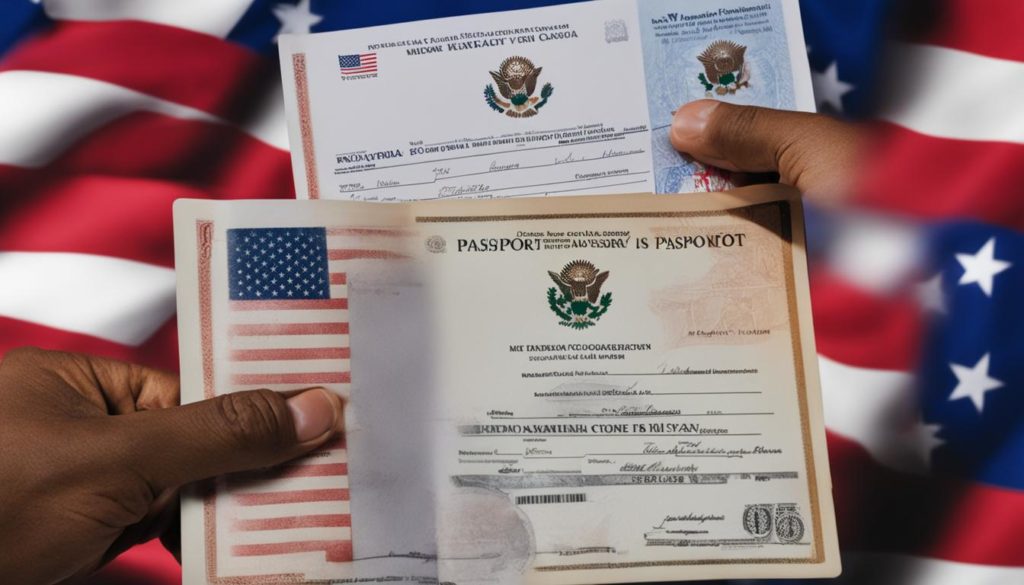
India Visa Interview Preparation Tips
Preparing for an interview as part of the Indian visa application process is crucial to increase the chances of a successful outcome. Here are some valuable tips to help US citizens prepare for their India visa interview:
- Be Honest: It is important to provide truthful and accurate information during the interview. Any discrepancies or false information can lead to visa rejection.
- Understand the Purpose: Have a clear understanding of the purpose of your trip to India. Prepare concise and convincing answers about the purpose, duration, and itinerary of your visit.
- Gather Relevant Documents: Ensure you have all the necessary documents to support your application. This may include flight itineraries, hotel reservations, invitation letters, and any other documents relevant to your trip.
- Dress Appropriately: Dressing in a professional and presentable manner shows respect and seriousness towards the interview process. It is advisable to dress conservatively and avoid casual attire.
- Maintain Confidence: Confidence is key during the interview. Answer questions confidently and assertively while maintaining a polite and respectful demeanor.
Quote: “Preparing thoroughly for the visa interview and presenting your case confidently can significantly increase your chances of obtaining an Indian visa.” – Visa Expert
Further Tips for a Successful Interview:
- Research Indian Culture: Show your interest in Indian culture and traditions by researching the country’s customs and etiquette. This demonstrates your genuine intent to immerse yourself in the Indian way of life during your visit.
- Provide Strong Ties to Home Country: Highlight your ties to the United States and demonstrate that you have strong reasons to return after your trip. This may include employment, family, or property ownership.
- Practice Interview Questions: Prepare by practicing common interview questions with a friend or family member. This will help you articulate your answers clearly and confidently.
- Remain Calm: Stay calm throughout the interview process. Take a deep breath and take your time to respond to questions. Maintain a positive attitude and avoid becoming defensive or argumentative.
By following these tips and adequately preparing for the visa interview, US citizens can maximize their chances of obtaining an Indian visa and enjoy a smooth travel experience to India.
India Visa Fees for US Citizens
Obtaining an Indian visa USA involves certain fees that US citizens need to be aware of. The visa fees vary depending on the type and duration of the visa, and it is important to consider these costs when planning your trip to India.
For tourist e-visas, the fees are as follows:
| Visa Type | Validity | Visa Fee |
|---|---|---|
| Tourist e-Visa (30 days) | 30 days from the date of arrival | $25 |
| Tourist e-Visa (1 year) | 365 days from the date of arrival | $40 |
| Tourist e-Visa (5 years) | 5 years from the date of arrival | $80 |
Please note that these fees are subject to change, and it is recommended to check the official Indian visa website for the most up-to-date information.
Additional Service Fees
In addition to the visa fees, there may be additional service fees charged by visa processing agencies. These fees cover the administrative costs associated with processing visa applications and providing support throughout the application process.
“The visa fee is non-refundable, even if the visa is not granted. It is important to carefully review the visa requirements and ensure that all necessary documents are submitted to avoid any delays or complications in the visa application process.”
It is important to note that the visa fee is non-refundable, even if the visa is not granted. Therefore, it is crucial to carefully review the visa requirements and ensure that all necessary documents are submitted to avoid any delays or complications in the visa application process.
By understanding the India visa fees for US citizens, you can plan your travel budget accordingly and have a hassle-free visa application experience.
Checking the Status of Your India Visa
Once you have submitted your Indian visa application, it’s natural to be eager to know the status of your visa. Thankfully, the Indian government provides a convenient way to check the progress of your application.
To check the status of your India visa, you will need your application ID and passport number handy. Simply visit the official Indian visa website and navigate to the visa application status page. Enter your application ID, passport number, and confirm the security code to access your visa status.
The status of your visa application will indicate whether your visa has been approved or if it is still in the processing stage. It’s important to note that the processing time for a visa application is typically around 4-5 days, but it may vary in certain circumstances or during peak travel seasons.
By checking the status of your India visa, you can stay informed and plan your travel arrangements accordingly. Once your visa is approved, you can download and print it for presentation upon arrival in India. It’s always recommended to wait for the visa to be granted before making any non-refundable travel arrangements.